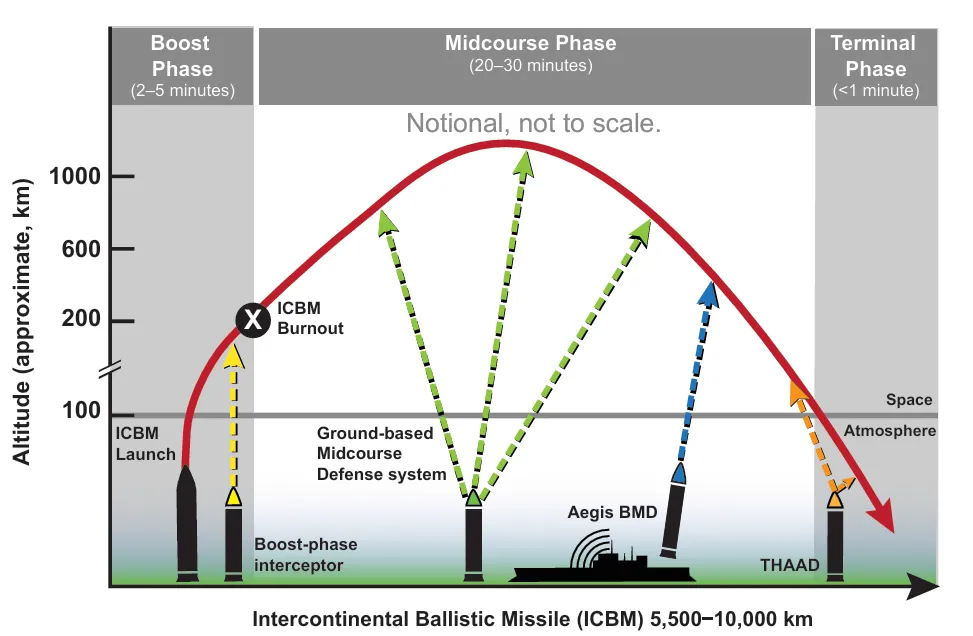The Golden Dome
Katrina Borthwick - 9th June 2025
On 27 January POTUS (the President Of The United States) signed an executive order to create an “Iron Dome” of defence against ballistic, hypersonic, cruise missiles and other advanced aerial attacks. This was renamed “Golden Dome for America” on 24 February. Surprisingly, the renaming isn’t about POTUS’ preference for golden things. Apparently “Iron Dome” is a registered trademark, owned by an Israeli defence firm.
Just last week it was reported that New Zealand has endorsed the Golden Dome initiative.
The cost of this new defence system is touted to be $25 billion, and it’s expected to be up and running in 3 years - by the time POTUS hangs up his hat. A week or so ago he revised this figure up to US$300 billion. To put that in perspective, the total cost of all US civil servants is US$400 billion annually.
It seems the whole idea came from POTUS himself, not NORAD or anyone involved in US defence. But Trump has said all the defence leads ‘wholeheartedly agreed’, so I guess if you put it like that… I do pity General Michael Guetlein of the U.S. Space Force, who has been appointed to be the programme manager of this thing.
Money is already starting to change hands on this one. It was reported on 30 May that Rocket Lab has signed a $460 million dollar deal to buy Arizona firm Geost, who develop missile warning and tracking, surveillance and reconnaissance systems, with a view to be in the running to build the golden dome. Other prospective suppliers have been lining up since then, including Elon Musk’s SpaceX. But I suspect that may not be a starter, given the recent falling out between Musk and Trump.
In February the American Physical Society published a report saying such a defence system was unlikely to work. They constructed a visual showing a view of what would be required to intercept a rapid salvo of 4 ICBMs (intercontinental ballistic missiles) from North Korea. They calculated it would require 1,600 space-based interceptors, if instant firing direction decisions were possible. If 30 seconds was allowed for firing decisions, then 2,200 interceptors would be needed. To stop 10 ICBMs then, 5,500 would be needed. All this at an estimated cost of US$100-180 billion. Significant progress on such a project would be unlikely to be made in the next 15 years. It certainly wouldn’t be done in 3. Geographically, it would look like this:

The report says that even the current US missile defence system wasn’t certain to hit anything, and has never been properly tested. One major challenge highlighted is the fact that the missile needs to be intercepted when it is on an upward trajectory (boost phase) or midcourse, but not on the way down, when it is going its fastest, and at only a minute out, is very likely to be closer to the target than any intercepting fire. You simply do not have the entire journey of a missile to intercept it. In the case of an ICBM, most of the journey is in outer space.

According to the report, no boost or terminal phase intercept system currently exists. The boost phase is only a few minutes long, so you would need to have a bunch of intercepting satellites pretty much parked over the aggressor country to achieve that. That’s not really possible in low earth orbit, as they keep moving - so you would need a series of them moving over the area. I’m thinking that North Korea would not be too happy about that sort of proximity. Added to this, the terminal phase of a missile is too short and fast to intercept, as the interceptor would need to be closer than the missile.
Of the defence systems shown in the diagram above, the US currently only has a Ground-based Midcourse defence system of 44 units. It has been 60% effective in tests, but those tests didn’t recreate the full conditions that would be seen in a real strike. None of the missiles shot down in Ukraine or Israel were ICBMs. An ICBM travels at around 25,000 km/hr (7 times the speed of a bullet), so would be extremely difficult to hit. And all of this is assuming that there are no countermeasures employed at all.
Also, if you are attempting a midcourse interception, you are intercepting in space. The laws of physics mean everything in space is moving the same way, regardless of mass. So, working out what piece of ‘space stuff’ is the target is hard. Plus, if I was going to do this, I would be launching a bunch of decoys to make it even more confusing.
To boot, these satellites would need to be in low earth orbit, so that means earth would be moving below them, and the satellites would be constantly moving out of range. An ICBM could be fired at the time of choosing, and presumably that would be whenever the interception satellites are the furthest away. That means more satellites are needed, to ensure enough are within range at any one time to shoot down a decent number of ICBMs. That number of satellites in low-earth orbit are a hazard in themselves. They would be floating over China and Russia, and would be likely to cause these countries to get upset and potentially lead to the weaponisation of space, and that’s not to mention the amount of space junk this creates. The night sky would be covered in flickering satellite reflections.
It would appear that a reliable missile defence system is a bit of a myth, and to build one that can reliably work, and be within range to hit anything in time, involves an unworkable amount of satellites. Presumably all of this would take up valuable real estate in low earth orbit. It also relies on nobody in any other countries getting upset about it. I’m sure something will be sent up into space before the end of POTUS’ term, it just won’t have anywhere near the functionality being envisaged.